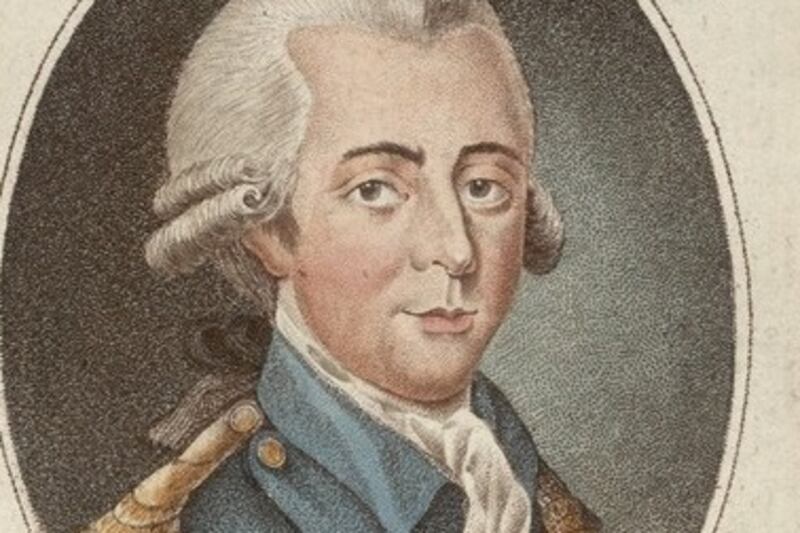Readers might recall a column here some years ago about the "Drummully Polyp" (September 18th, 2013): a small piece of my native Monaghan that juts into Fermanagh and, since partition, has been by far the most eccentric feature of the Border. As I mentioned then, it's about seven miles (11km) long, north to south, and a maximum three miles (4.8km) wide. But the isthmus connecting it with the Republic is much narrower – you could shout across it – and there is no road in at that point, making the enclave almost an exclave.
Residents apart, most people’s only visits to Drummully are fleeting, and unconscious, as they drive along the main road between Clones and Belturbet (something uniformed gardaí or PSNI members cannot do without risk of diplomatic incident). In the process, you cross the Border four times in about nine minutes: although again these days – pending Brexit – you may not notice.
So reading a fascinating new book on the history of partition recently, Unapproved Routes, by Peter Leary, I was unsurprised to see Drummully earn a chapter all to itself.
And although Leary, a Fermanagh-born Oxford don, is no wiser than I as to how the salient first arose (as the book summarises, it’s considered locally the product of “some long forgotten feud between petty kings”), he does discern in it at least one piece of cartographical logic.
The area comprises 16 townlands: those smallest of Ireland’s geographical divisions, which unlike counties, predate English rule. As such, Drummully was almost certainly a ballybetagh: another old unit, usually of 16 townlands, and now defunct except in a few vestigial place-names.
Leary describes the complications that beset this part of Monaghan when a Border suddenly descended on it in the early 1920s. To get to the local market in Clones, for example, farmers now had to cross an international boundary twice in each direction and, returning from the Free State to the Free State, were liable to be treated like Northerners “with dutiable goods”.
Then there were the churches. A local Church of Ireland was in Monaghan, while its presbytery was in Fermanagh.
In the resultant confusion, for several years, no marriages there were legally registered in Dublin.
The Drummully Polyp looked like a candidate for excision when the Boundary Commission started studying the Border in 1924, with the vague remit of correcting anomalies in a way that reconciled "the wishes of the inhabitants, so far as may be compatible with economic and geographic conditions".
A majority of the area's farmers – with a bigger majority of land – were Protestant, and therefore inclined towards inclusion in the new Northern Ireland. But when you counted the small-holders and landless labourers, as democracy stubbornly insisted upon, the Catholic/Nationalist population dominated.
A local Protestant complained that while his family had four adults, there were another 12 in the “cottages” on his land, so that “our Unionist votes are outnumbered on our own property [...] and by our own dependants”.
But none of these arguments, or a fact-finding visit to Drummully by the Boundary Commission chairman, mattered in the end. A premature leak of findings caused the body to break up in rancour, without making any changes.
If Drummully remains the greatest Border anomaly, there were hundreds, maybe thousands, of smaller ones: cases where the boundary divided farms, farmyards, and even houses. A classic example was the Murray family from Gortineddan, who lived in both Fermanagh and Cavan, and also feature in Leary’s book.
The Murrays were among partition’s early celebrities, because their thatched house was of great interest to the press and of even greater propaganda value to anti-Border campaigners. The dividing line cut through the family’s living room, making it possible to sit on a chair in the North, while eating off a table in the South.
In a 1949 pamphlet, the Murrays are pictured outside their doorway, just inside Northern Ireland, while their dog stands nearby, straddling the two jurisdictions. Aptly, so far as one can be sure from a grainy old photograph, the dog appears to be a Border Collie.
Leary's latest project is a study of that family in particular. But for anyone who wants an advance briefing on the work, there will be an opportunity in Enniskillen on October 20th at the annual dinner of the Clogher Historical Society, after which Dr Leary will be guest-speaker, on "The Murrays of the Border". Details are at clogherhistory.ie





